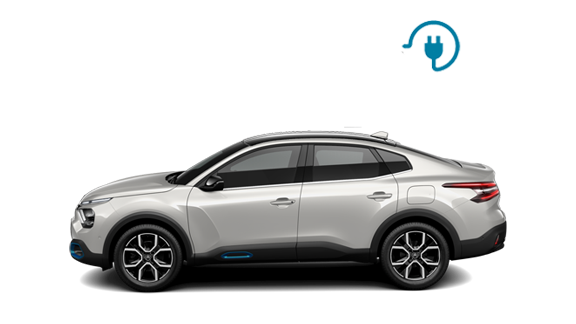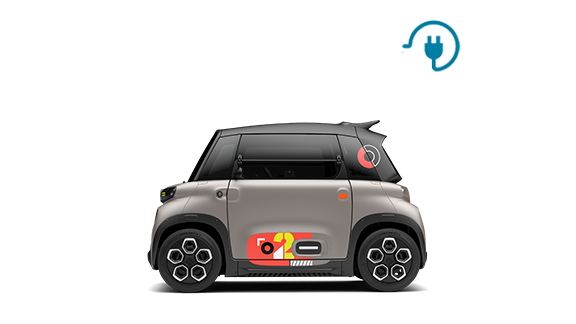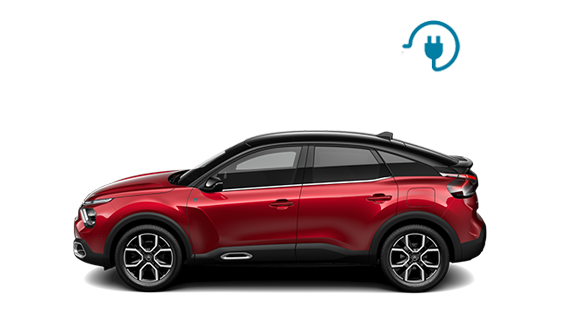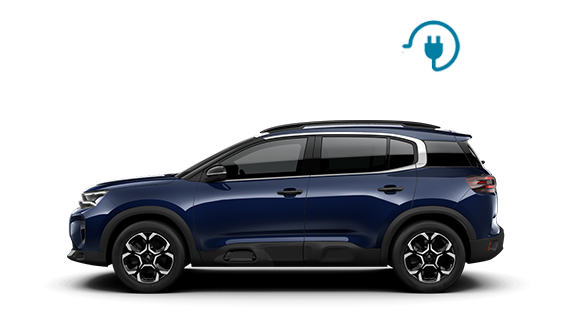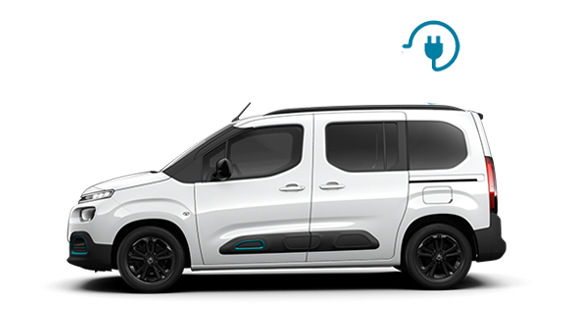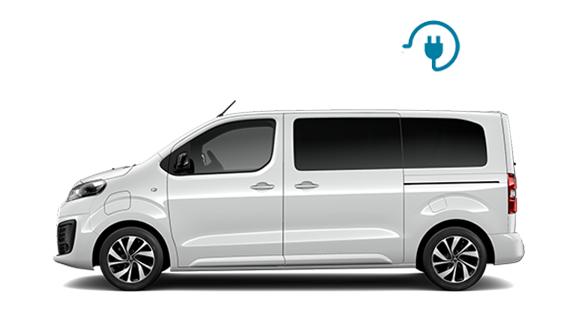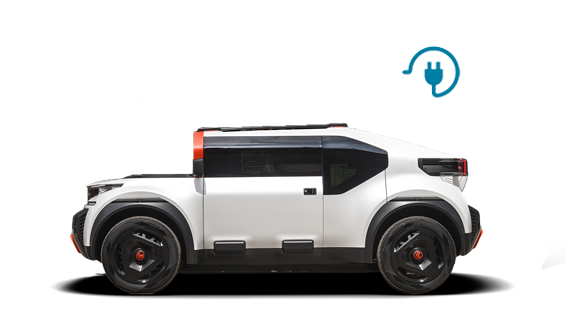
ELECTRIC CITROËN CHARGING
EV charging is an essential part of owning and maintaining an electric vehicle. Instead of being fuelled by petrol or diesel, an EV runs on a battery which needs to be recharged with electricity in order for the vehicle to keep running.
EVs can be plugged into a power source which recharges the battery. There are three kinds of charging – slow, fast, and rapid. These each come with their own style of connector and directly impact how long it takes you to recharge an EV.
At home
Cost
Availability

AT HOME
In the street
There are a growing number of standard and rapid charge points across the country, operated on many different networks. Usually, you have to register with these networks, or download their app to use the charge points – but an increasing number are now being installed with payment card facilities built in.
Many are completely free to use. Others you pay for, either by the time you spend plugged in, or the amount of energy you use.
To find out what there is in your area, who operates the points, and whether you have to pay to use them use the Octopus Energy map below

IN THE STREET
There are a growing number of standard and rapid charge points across the country, operated on many different networks. Usually, you have to register with these networks, or download their app to use the charge points – but an increasing number are now being installed with payment card facilities built in.
Many are completely free to use. Others you pay for, either by the time you spend plugged in, or the amount of energy you use.
To find out what there is in your area, who operates the points, and whether you have to pay to use them use the Zap Map below

AT THE SHOPS
There are several supermarkets and shops that have free electric car charging points. There are two different types of free charging electric car drivers can look out for - destination charging and rapid charging points.
Rapid charging points can charge your car in a shorter time than destination charging, but they're not always available. Destination charging is when you use a specific charging station to charge your car. Zap-Map is a great source to locate electric charging points near you.
No matter what your destination is, Free2move Charge elevates the experience of driving and owning an electric or hybrid vehicle, making it easy to always be charged.
Free2move Charge in partnership with Octopus Energy offer a tailored EV charging solution for every customer, covering home chargers, home energy tariff and on the go public charging, all provided with award winning customer service from Octopus Energy – Which recommended energy provider for 7 years running.
A Wallbox is a device installed on a wall and used to charge an electric car. The Wallbox is connected to the electrical grid, provides power to the car’s battery, and is a charging point set at your convenience
To install a Wall box, you must first ensure you use an approved electrician to carry out the procedure. You will also require off-street parking such as a driveway and working Wi-fi to be able to get your Wallbox installed
When you choose to install a home Wallbox charger for your electric vehicle, you will discover the many benefits that come with it:
- Convenience - being able to charge your electric vehicle in the comfort of your own home is both practical and safe for you and your EV vehicle
- Save money – a home Wallbox runs at the same rate as your household electricity, which means you can explore the best rates, unlike public electric car stations that have fixed rates.
- Charging speed – A Wallbox provides much more energy than a typical domestic plug, ensuring your electric vehicle is charged up in no time!
CHARGING CABLES
Standard mode 2 cable
Single-phase mode 3 cable
Three-phase mode 3 cable
CHARGING TIMES
Select your Citroën electric vehicle and simulate the charging times according to the different charging modes available.
FREQUENTLY ASKED QUESTIONS - ELECTRIC
WHERE AND HOW CAN I CHARGE MY ELECTRIC CAR?
Home: if you have off-street parking, we recommend you get a charging point installed. Citroën have partnered with Pod Point for home charging - and your Dealer can start the process for you.
Work: many workplaces already have electric vehicle charging points installed.
Public: there is a vast network of publically available chargepoints across the country and many of them are completely free to use. There are a number of different providers however, so www.zap-map.com is the best place to do research on what's available in a certain area from all providers.
On-Street Residential: in you don't have off-street parking at home, it is worth contacting your council to find out what they are doing in this area. Central government has funding available to local councils for them to provide charging points for residents who have to park on the street.
HOW LONG WILL IT TAKE TO CHARGE MY CAR?
Citroën vehicle socket: Type 2 connector
Citroën battery electric vehicles on board charger:
7kW (monophase) as standard: charge time - 7 hours 30 mins
11kW (three phase) as factory option: charge time - 5 hours
100kW CCS Rapid Charge as standard: charge time 30 mins to 80%
Citroën plug-in hybrid on board charger:
7kW (monophase): charge time - 1 hour 40 mins
Citroën supply an 7kW accelerated charging cable as standard, to connect to a 'type 2' charging point, as it’s the recommended method for daily charging any electrified vehicle. If you wish to charge from a 3-pin domestic socket, a cable is available for purchase as an accessory. Rapid charging for full electric vehicles does not need a separate cable, as these are always tethered to the charging point.
HOW CAN I INSTALL A CHARGING POINT IN A MULTI-FAMILY RESIDENCE?
WHAT WILL OWNING AN ELECTRIC CAR DO TO MY ELECTRICITY BILL?
If you’re charging an electric car regularly, there’s no escaping the rise in your energy bill. But remember that trips to the petrol station are removed or reduced, depending on your EV type, and electricity is generally around a quarter of the price of conventional fuel.
There are also suppliers who’ll offer cheaper tariffs for use overnight, so you can charge your car at a reduced rate while you sleep. This can cut costs by a third or even more. Public charging can also alleviate the electric use at home, whether at the shops or at the office, where it isn’t considered a taxable benefit.
IS IT EASY TO CHARGE AN EV/PHEV?
All you need is a domestic socket to charge an EV, but we recommend having a dedicated home wallbox installed. This will make charging much faster, safer and more convenient.
There are two types of charging available: AC, which is typically the sort that powers a home wallbox, and DC, which provides rapid charging and is often found at public charge points like service stations or outside supermarkets.
WHAT HAPPENS IF I RUN OUT OF CHARGE?
While PHEVs will automatically switch to petrol or diesel power when the batteries are drained, an all-electric car owner will need to be a bit more forward thinking. However, you’ll get plenty of warning before the battery is completely drained.
It’s best to always keep the car charged up for impromptu trips out, to avoid unexpected breakdowns.
IS CITROËN LOOKING AT HYDROGEN AS AN ALTERNATIVE POWER SOURCE?
Citroën strives to bring the most efficient technologies to market and support the UK in becoming a world leader in green motoring and technology.
However, the practicalities of producing, storing and distributing hydrogen mean that battery-powered electric vehicles are much more viable for cars and light vans in the UK right now. They’re also cheaper to buy and run.
WHAT ABOUT SYNTHETIC FUELS?
Some experts point to synthetic fuels to reduce carbon, through the likes of hydrogen, which can be burned in a conventional combustion engine. However, creating these fuels can require a lot of energy and it may be a power source that’s more appropriate for heavy vehicles like buses and trucks.
In the UK and Europe, with rapidly advancing electric infrastructures, Citroën believes EVs are the best way to contribute to the decarbonisation of transport for light vehicles and vans.
CAN I PROGRAM THE CHARGING OF MY CAR?
WHAT IS THE DIFFERENCE IN CHARGING AN ALL-ELECTRIC OR HYBRID EV?
Whether you’re charging an all-electric vehicle like the Citroën ë-C4 or a hybrid, such as the New C5 X Plug-in Hybrid, the method of charging remains the same – by connecting the vehicle to a public or at-home EV charger via a compatible cable from the charging port.
The only difference between full EVs and hybrids is the battery capacity, and thus charging times. While all-electric models require enough power for hundreds of miles per charge, hybrids only require around 30 miles of electric energy each charge as they also rely on an internal combustion engine. As such, fully electric vehicles often require more time plugged in, although rapid charging can significantly reduce this.

